
|

|
|
Home Site Search Contact Us Subscribe
|
|
Book Review: "Villas and Gardens of the Renaissance" by Lucia Impelluso with photography by Dario Fusaro What better escapist yet relevant book could an architect desire? The splendors of Italian Renaissance architecture illuminate our Dark Age and transform eye candy into brain food. By Norman Weinstein April 30, 2020 Are you weary of cheery reading lists online that make shelter-in-home seem like an educational opportunity of a lifetime you’ve longed desired? I know I’m weary of those recommended book lists. With actual libraries and bookstores still generally shuttered in this land, reading books becomes screen time supplemented by whatever books were in your home library before this plague began. You know. That tower on your nightstand you’ve been meaning to get to, and now you have all this time at home to read, read, read.
So my recommended reading list for architects during this surreal interruption of everyday life consists of a single volume by Lucia Impulluso with photographs by Dario Fusaro, Villas and Gardens of the Renaissance (Rizzoli, 2019). A coffee table book. So however distracted you feel, there is not a decent excuse for not completing your perusal of this coffee table book. Just enjoy the designs of Renaissance villas and gardens in your hands.
But why? We’re not designing in the midst of a Renaissance. Or could we re-enter that historical period with an eye for what can revivify our design sense now?
Some quick lessons might be easily derived from the nine villas and gardens showcased here. First, ceilings as complex painted surfaces add immeasurable coloristic beauty and sense of spatial depth. Modernism’s adoration of interior white walls and ceilings shifted our attention away from the layered complex stories ceilings can tell. This book opens with Impelluso’s finely detailed writing integrated with Fusaro’s dramatically charged photography of the Villa Cicogna Mozzoni. The baroquely decoratively painted ceiling of the villa’s western portico dating from 1580 features a bountiful arbor. That means the villa’s landscape seen from the portico is replayed with variations when you gaze at the villa’s ceiling. This might have inspired William Morris in the late 19th /early 20th century when creating decorative interiors that would “bring the bower indoors.” The implications of biomorphic ceiling designs in our time await new discoverers.
Lesson two: memorable architecture invites you to participate in a symbolic story about itself. Flip through the photographs of the entrances of these villas while meditating upon how you might feel crossing the threshold of their grounds and buildings. The statues of Juno and Jupiter welcoming you to enter the Villa Barbaro seemingly have zero relevance to designing building thresholds and front doors in our time. But these mythic figures raise a pertinent design issue as mythic symbols of different manifestations of human power within a household. Juno is a symbol of a warming hearth cohering a home; Jupiter is a symbol of how a household is regulated by firm boundaries. A visitor to the Villa Barbaro is greeted by images preparing them to experience the architecture and grounds as a balancing act between sensations of heartwarming fluidity and intellectually satisfying solidity. That makes the entrance to any architecture anywhere a promethean but potentially enriching occasion for architect and dweller and visitor.
Lesson three: architecture can embody a bizarre flight from everyday rationality – while leading to a higher degree of rational sense. Case in point: the buildings and grounds at Bomarzo created by Vicino Orsini in the early 16th century. Whatever “folly” means in architectural history, a case could be built that Bomarzo is a supreme realization of an architectural folly – and more. Among its features are a building in the form of a satanic monster with a gaping mouth for an entryway. Enter and it becomes a rest stop with a table and chairs where visitors can take a breather. There’s a remarkable house intentionally built at an alarming incline. A glance through one of its second story windows gives you a view of a nearby garden. The other window frames the clouds on the horizon. What can a practical minded contemporary architect learn from this? How can the rhythmically unexpected placement of windows present to dwellers continual surprises? What appears pure madness raises issues quite worth considering rationally.
An ideal companion to Villas and Gardens of the Renaissance by the same author is Gardens in Art (J. Paul Getty Museum, 2007). Impelluso deftly balances expertise in both art history and architectural history, a difficult balance to achieve. She has a sensitive eye. Her book offers a range of landscape paintings that raise questions about garden design. She has a great talent for reading architecture symbolically and mythically, a skill that could be applied to today’s architecture – though such an approach awaits a groundbreaking writer.
Meantime, savor this eye candy that is also brain food – and if this appeals, look at the equally satisfying Italian Gardens of Lake Como by Impulluso and Fusaro (Rizzoli, 2018). When this version of the Dark Ages ends, we’ll all need to think about how to contribute to a Renaissance.
Norman Weinstein is the author of “Words That Build” – an exclusive 21-part ArchNewsNow.com series about writing as a keystone of a successful architectural practice. He's authored several books of poetry and books about music and literature. Weinstein is currently learning weaving in order to deepen his understanding of architecture, music, and poetry. He can be reached at nweinstein25@gmail.com.
More by Weinstein:
Weinstein: From Ada to Zaha and Everything In Between Op-eds, book reviews, musings, and debate.
An exclusive 21-part series that focuses on the overlooked foundations of architecture: oral and written communication.
Most recent:
Top Architecture and
Design Books of 2019
Simon Unwin envisions children in their playful place-making defining architecture's essence in "Children as Place-makers."
Book Review on the
Day of a Book Launch Party for nARCHITECTS
Best
Bauhaus Books to Peruse During the Bauhaus Centenary
Best
Architecture and Design Books of 2018
Writing About Architecture As If Only Art Matters A new coffee table book about Frederic Church's Olana combines resplendent photography with essays reflecting architectural myopia.
Welcome New Books Reveal the Heart of the Matter in Architectural Design Kenneth Frampton's new edition of Kengo Kuma's works, along with Kate Franklin and Caroline Till's global survey of novel thinking about sustainable materials, offer new slants on how materials matter.
Educating Future Architects to Think Like Curious Clients Expanding architectural education to include more about client consciousness is a key to enriching the profession.
Architectural Education at the Crossroads? Educators Duo Dickinson and Phil Bernstein look in opposite directions when assessing architecture school quality - but the next architecture school transformation may emerge from where no one is looking.
|
(click on pictures to enlarge) 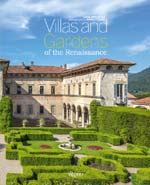 Dario Fusaro "Villas and Gardens of the Renaissance" by Lucia Impelluso with photography by Dario Fusaro (Rizzoli) 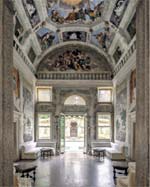 Dario Fusaro Villa Barbaro 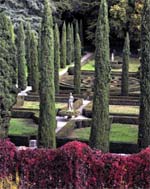 Dario Fusaro The Giusti Gardens 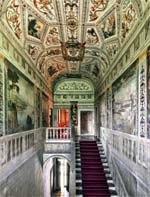 Dario Fusaro Villa Cicogna Mozzoni 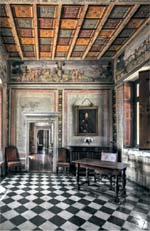 Dario Fusaro Villa Cicogna Mozzoni 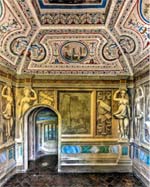 Dario Fusaro Villa Imperiale 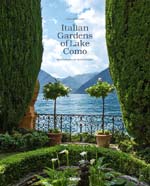 Rizzoli, 2018 "Italian Gardens of Lake Como by Lucia Impelluso with photography by Dario Fusaro 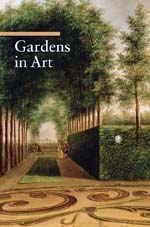 Getty Publictions/J. Paul Getty Museum Gardens in Art by Lucia Impelluso |
© 2020 ArchNewsNow.com